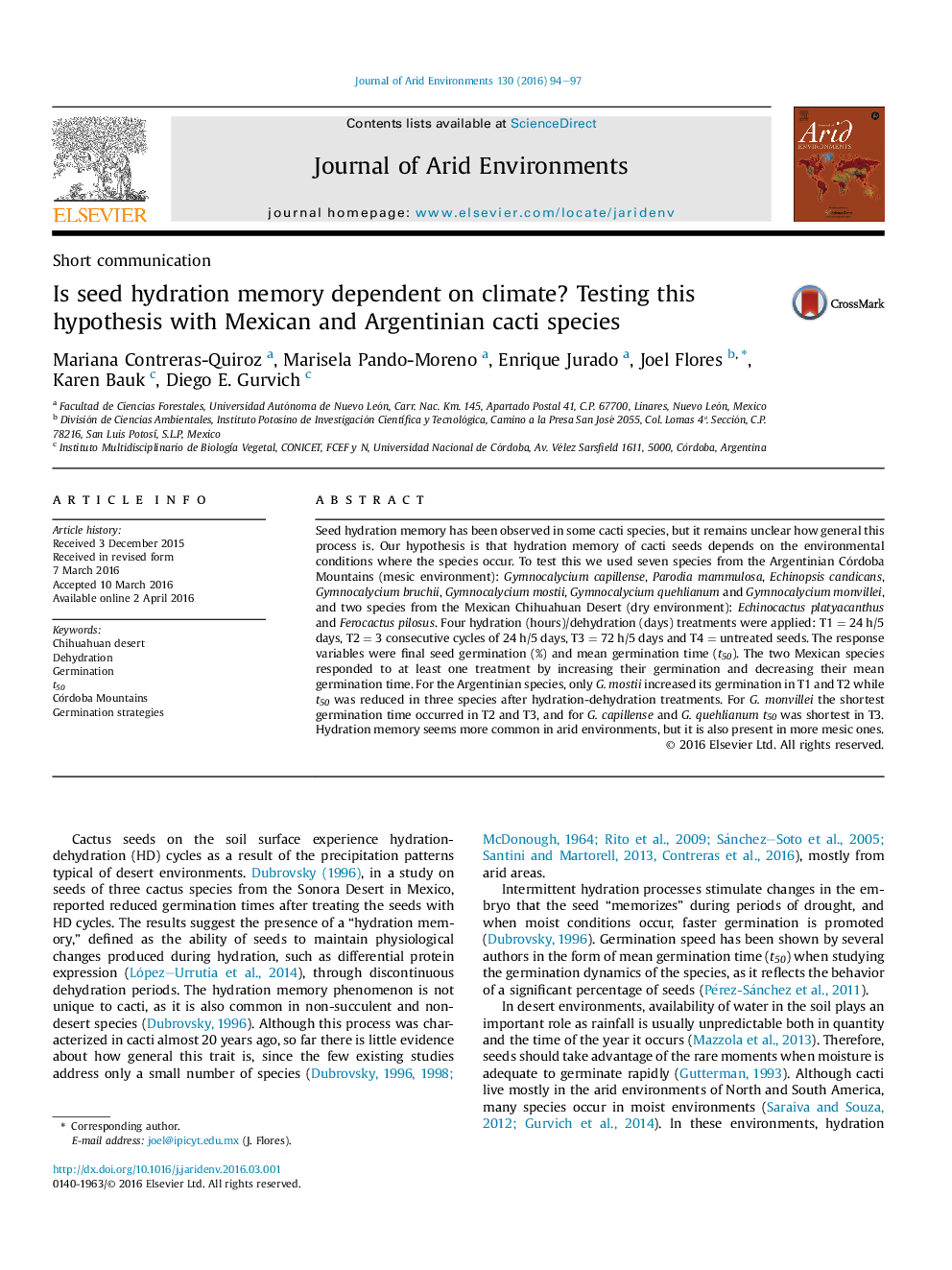| Article ID | Journal | Published Year | Pages | File Type |
|---|---|---|---|---|
| 4392696 | Journal of Arid Environments | 2016 | 4 Pages |
•Some changes induced by hydration are retained in seeds when dehydrated.•Certain species increase germination after hydration-dehydration.•Germination time decreased with HD cycles in some cacti species.•Germination response is probably an adaptation to discontinuous hydration cycles.•Species from more humid habitats may not show a seed hydration memory.
Seed hydration memory has been observed in some cacti species, but it remains unclear how general this process is. Our hypothesis is that hydration memory of cacti seeds depends on the environmental conditions where the species occur. To test this we used seven species from the Argentinian Córdoba Mountains (mesic environment): Gymnocalycium capillense, Parodia mammulosa, Echinopsis candicans, Gymnocalycium bruchii, Gymnocalycium mostii, Gymnocalycium quehlianum and Gymnocalycium monvillei, and two species from the Mexican Chihuahuan Desert (dry environment): Echinocactus platyacanthus and Ferocactus pilosus. Four hydration (hours)/dehydration (days) treatments were applied: T1 = 24 h/5 days, T2 = 3 consecutive cycles of 24 h/5 days, T3 = 72 h/5 days and T4 = untreated seeds. The response variables were final seed germination (%) and mean germination time (t50). The two Mexican species responded to at least one treatment by increasing their germination and decreasing their mean germination time. For the Argentinian species, only G. mostii increased its germination in T1 and T2 while t50 was reduced in three species after hydration-dehydration treatments. For G. monvillei the shortest germination time occurred in T2 and T3, and for G. capillense and G. quehlianum t50 was shortest in T3. Hydration memory seems more common in arid environments, but it is also present in more mesic ones.
